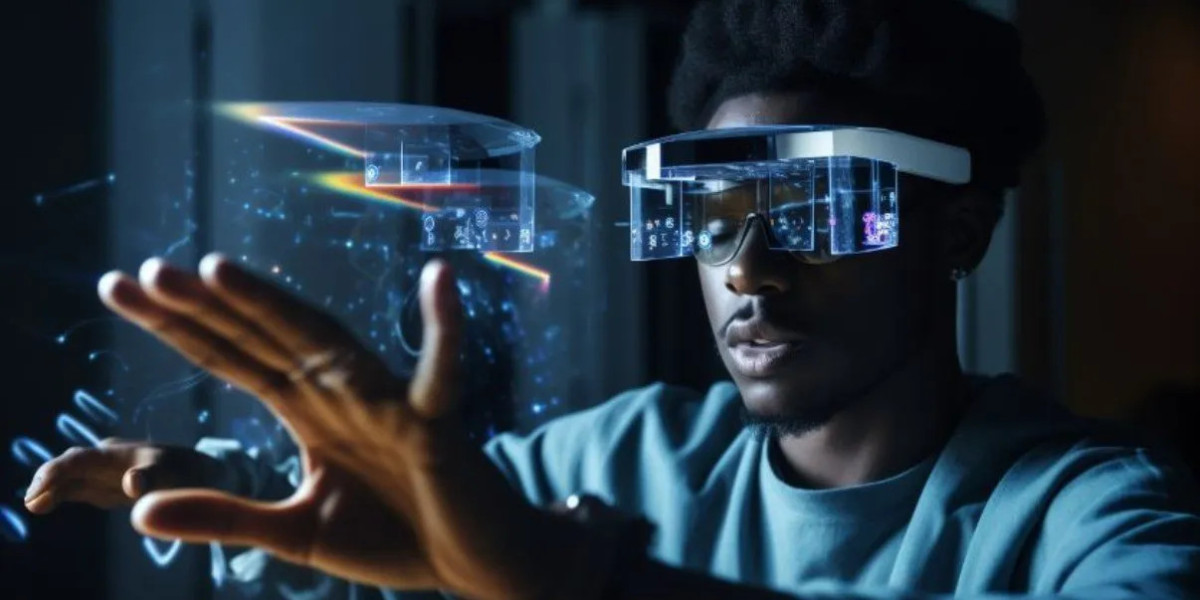For decades, the concept of spatial computing seemed like something straight out of science fiction. We saw visions of virtual worlds seamlessly blending with the physical realm in movies like Minority Report and The Matrix, where characters interacted with holographic displays and digital objects without traditional input devices. While these depictions felt futuristic, they sparked our imagination and set the stage for what is now becoming a reality.
In 2024, spatial computing platforms are no longer a fantasy. They are actively shaping our daily lives, enabling immersive experiences in augmented reality (AR), virtual reality (VR), and even mixed reality (MR). These platforms are rapidly transforming industries, from gaming and entertainment to healthcare and urban development.
1. The Rise of Immersive Experiences
The dream of blending the physical and digital worlds is now achievable thanks to spatial computing platforms. AR and VR were once niche technologies used for research or entertainment, but today they are integral to various sectors. The technology behind spatial computing, which includes real-time spatial mapping, motion tracking, and advanced rendering, has enabled developers to create rich, immersive experiences.
In AR, spatial computing platforms allow digital content to be overlaid on the physical world. For example, in retail, customers can visualize products in their own space before making a purchase, while in education, students can interact with 3D models of historical events or biological structures. VR, on the other hand, provides fully immersive experiences where users can step into entirely virtual worlds for training simulations, entertainment, or collaboration.
Why it matters: These immersive experiences are reshaping how we interact with digital content, making it more engaging and accessible. Spatial computing platforms bring the fiction of digital worlds to life, with real-world applications that have practical benefits.
2. Breaking Barriers with Gesture and Voice Interaction
In the world of science fiction, interacting with technology was often portrayed through gestures or voice commands, bypassing the need for physical input devices. This futuristic way of controlling technology is now becoming a reality through spatial computing platforms.
Leading spatial computing platforms are capable of detecting and responding to user gestures, hand movements, and voice commands in real-time. These platforms use sophisticated sensors, cameras, and AI-powered algorithms to track movements and interpret commands, allowing users to interact with digital environments in an intuitive and natural way.
For instance, in a virtual reality game, players can use hand gestures to grab objects, or in an AR app, they can point to a location to get more information. Voice commands can further enhance the experience by controlling actions, such as adjusting settings or activating features.
Why it matters: The ability to interact with technology through gestures and voice adds a layer of convenience and immersion. It eliminates the need for traditional input devices, making spatial computing more user-friendly and opening up new possibilities for how we engage with digital content.
3. Holographic Displays: From Sci-Fi to Real-World Applications
Holograms were a staple of sci-fi movies, where characters would interact with floating 3D images and data projections. In reality, the development of holographic displays powered by spatial computing is bringing us closer to this futuristic technology. Companies like Microsoft with their HoloLens and Magic Leap are already delivering mixed-reality experiences, where holograms blend with the real world.
These holographic displays allow users to manipulate 3D digital objects in their physical environment. Whether for collaborative design, medical training, or virtual meetings, spatial computing platforms allow holograms to be used for both personal and professional applications.
Why it matters: Holograms are no longer confined to the world of fiction. With spatial computing platforms, they are becoming a part of our everyday experience, changing how we visualize data, interact with information, and collaborate in both virtual and real-world settings.
4. Smarter Cities with Real-Time Data and Spatial Awareness
One of the most transformative impacts of spatial computing is its role in building smart cities. Science fiction often depicted cities with intelligent infrastructure, where everything from traffic lights to streetlights operated autonomously and in sync with each other. In modern times, spatial computing platforms are enabling these intelligent urban environments by integrating data from IoT sensors and processing it in real-time.
Cities can now monitor everything from traffic patterns and pollution levels to energy consumption and public safety. With spatial computing platforms, urban planners can create detailed, dynamic models of cities that respond to changes in real time, such as rerouting traffic to alleviate congestion or adjusting street lighting to save energy.
Why it matters: Spatial computing is unlocking the potential of smart cities by making them more responsive and efficient. These platforms allow for better urban planning, sustainability, and quality of life, turning the sci-fi concept of smart cities into a tangible reality.
5. Changing Industries: Healthcare, Education, and More
In science fiction, we often saw how technology transformed industries in ways that seemed unbelievable. Today, spatial computing platforms are driving similar innovations across several industries.
In healthcare, spatial computing is enabling groundbreaking advancements, such as remote surgeries, 3D visualizations of patient data, and training simulations for medical professionals. Surgeons can practice complex procedures in virtual environments or use AR to guide them during operations, improving precision and patient outcomes.
In education, spatial computing platforms offer immersive learning experiences that go far beyond traditional classrooms. Students can explore historical events in AR, dissect virtual organisms in 3D, or experience global landmarks through VR.
In real estate, spatial computing is transforming property showings and architectural design. Prospective buyers can explore 3D models of homes and buildings remotely, and architects can design structures using mixed reality to interact with models in real-time.
Why it matters: Spatial computing is revolutionizing industries by making complex tasks more efficient, offering new ways to learn, and enhancing the accessibility of services. What was once imagined in sci-fi is now benefiting society on a practical level, with real-world applications that improve productivity and quality of life.
6. The Role of AI in Spatial Computing
Science fiction often featured artificial intelligence (AI) as an essential component of advanced technologies, enabling machines to think, learn, and adapt to human needs. Today, AI is deeply integrated into spatial computing platforms, enhancing their capabilities and making them smarter.
AI algorithms help spatial computing platforms process and understand vast amounts of data in real time. In AR and VR, AI enables dynamic interactions by predicting user behavior, adjusting content, and making experiences more personalized. For example, AI-powered spatial computing platforms can recognize objects in the real world and adjust virtual overlays accordingly, providing contextual information or visual enhancements.
Why it matters: The integration of AI into spatial computing platforms takes them to the next level, making them more intelligent, responsive, and adaptable. This fusion of technologies creates smarter, more intuitive systems that cater to individual user needs and preferences.
Conclusion
What once seemed like the stuff of science fiction is now a reality, thanks to the rise of spatial computing platforms. From immersive AR and VR experiences to smart cities and healthcare innovations, these platforms are reshaping industries and transforming how we interact with the world around us. The power of spatial computing lies in its ability to seamlessly blend the digital and physical realms, offering endless possibilities for the future. As technology continues to evolve, we can expect even more groundbreaking advancements, making today’s sci-fi visions the reality of tomorrow.



